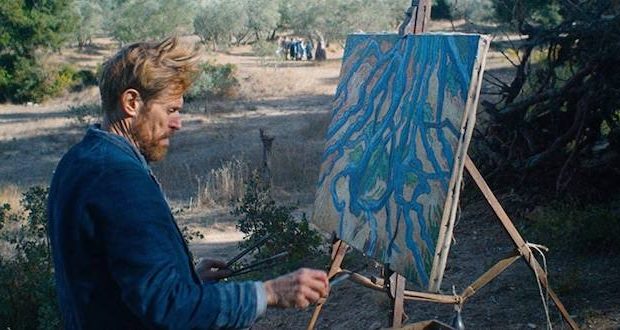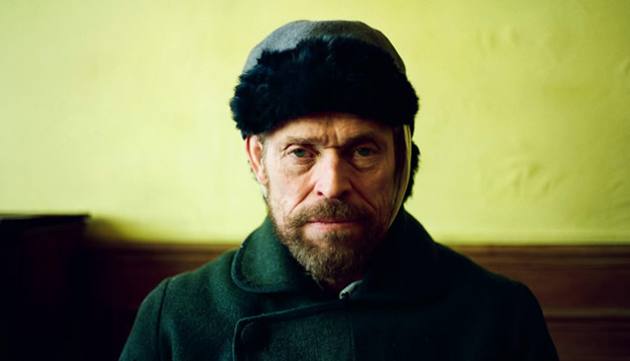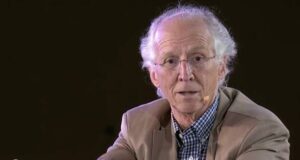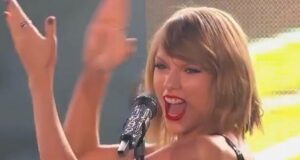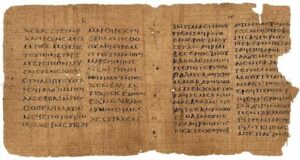He had come to Arles to get away from the fog and colorless gray of Paris. But when Vincent van Gogh first arrives, it seems little better. Wind buffets the window, rattling it like an angry child. His room is muted and cold: He blows on his hands to try to warm them. He slowly pries his battered shoes off his feet, toe at heel: They clatter to the floor with a clump: gray-brown leather on gray-brown brick.
And then, Vincent (William Dafoe) takes out his easel and begins to paint. Rapidly, furiously, the brush moves across the canvas: Red chases yellow across rich browns and even blues. They grow vivid, rambunctious. They come alive, dizzy, mad with color.
Beautiful? No one would call those old shoes beautiful, and certainly not a subject worthy of a painting. Except, perhaps, Vincent van Gogh.
Years after he died, van Gogh was celebrated as a genius, bold and bright and utterly uncompromising. A century after, each painting, each sketch, each scribble might sell for millions. But when he went to Arles in 1888, he was a broke, reclusive failure, and very likely insane. He lived entirely off the goodwill of his brother, Theo. Only Theo believed in Vincent’s talent. Only he loved Vincent.
So, thanks to his brother, Vincent still paints—sometimes a painting a day, or two or three. He slaps color on canvas quick and heavy, as if driven by an inner demon or angel or both.
He paints because he must. “I can’t do anything else,” he tells a priest one day. “Believe me, I’ve tried.” People call his work ugly, horrible, terrifying. Vincent says he paints only what he sees, what he knows. No matter his success, no matter the praise, he’d paint just the same. The swirls of yellow, the slashes of green, the colors growing on canvas in lumps and edges.
He paints what he sees. Whether it seems beautiful or horrible, brilliant or terrible, he paints what he sees.
The Vincent van Gogh we meet in At Eternity’s Gate is not the easiest person to be with, much less care for. But Theo is unreserved in his love for his big brother.
Their first meeting here takes place in an asylum, where Vincent lies in bed. He invites Theo to lie beside him, as they used to do as children to ward off the cold, and Vincent lays his head on the man’s chest as if he were still a child. The scene conveys the tenderness the two brothers have for each other, and the extent to which Vincent leans on Theo for all manner of support.
Theo is also Vincent’s strongest, sometimes only, artistic champion. He assures Vincent that despite his lack of sales, he’s an artistic genius. (And as a curator and art dealer, Theo should know what he’s talking about). And he continues to support Vincent financially, as well, giving his brother 250 francs a month for living expenses and canvasses. It’s not a princely sum by any measure. But Theo, too, is a man of limited means, and it’s all he can afford.
Vincent is deeply grateful for Theo’s love and support, as he is for the other moments of love and affection he receives at times. And we can laud him for the courage to paint what he sees, regardless of the reactions of the day. He does seem to have a gift to see another layer of creation that remains hidden to the rest of us.
“When painting a flat landscape,” he says, “I see eternity. Am I the only one to see it? Existence can’t be without reason.”
Van Gogh is also a spiritual man. Vincent tells a priest that his father was a minister, and he’s still deeply spiritual. (Indeed, the real van Gogh served as a missionary for a short while.) He talks of finding God in nature (at one point making the two sound nearly synonymous, saying “I feel God is nature, and nature is beauty”).
When Vincent winds up in another asylum, he has a profound theological discussion with a visiting pastor. The priest, who has little appreciation for Vincent’s artistic abilities, balks when Vincent suggests that his artistic vision and skill are gifts from God. The priest wonders why God would “bless” someone with the ability to paint such horrible, ugly things.
And when Vincent accepts that some of his paintings do depict ugliness, and that his “gift” sometimes is the source of pain, the priest pushes back again. “God gave you this gift to keep you in misery?” he asks. Vincent ponders the question, and then suggests God made him too soon: “Maybe God made me a painter for people not born yet.” Finally, he admits that he paints “from my qualities and faults.” Both are found in the dreamlike honesty of his work. “I think of myself as in exile,” he adds.
The film may well be the sleeper hit for adults looking for something deeper than animated characters, car chases or giggles this holiday season.
More than a century after his death, Vincent van Gogh remains a mystery in many ways. How did his madness impact his genius? How did his genius impact his madness? Was he blessed by angels? Plagued by demons? Did they somehow collaborate to create the artist we know and revere today?
At Eternity’s Gate is a dreamlike film, giving us a hint of the glory Vincent sees via its vistas and smallscapes, sometimes offering a glimpse of the world through Vincent’s own eyes. Even the cinematography in such scenes hints at his curious division of soul: It’s as if he, and we, are wearing mismatched bifocals—the top two-thirds of the frame clear and sharp, the lower third blurred and dreamy.
The film is getting some awards-season attention, especially for Willem Dafoe’s turn as Vincent van Gogh. And At Eternity’s Gate doesn’t detract from that performance with a lot of problematic content we often call out: Indeed, unlike van Gogh himself, this picture is a model of artistic restraint—a story resonantly told and beautifully filmed without a lot of salacious schlock to get in the way. We see both van Gogh’s brilliance and his terrible struggles. While the painter’s life was not particularly family friendly itself, this movie deals with it about as well as it can.
Admittedly, the spiritual elements here might give some viewers legitimate pause: Some might see it pushing Vincent past being a Christ-like figure and into a secular stand-in for Christ himself—a child of God not like what we are, but what He was.
But for the most part, I don’t think the film’s spiritual perspective seeks to weaken or use faith as much as it asks legitimate questions of it, and of God’s relation to creations like van Gogh—who, in turn, mirror God’s creative impulse through painting.
At Eternity’s Gate is not for children. But for the rest of us, this film can be, much like van Gogh’s paintings, beautiful and ugly and deep.
–PluggedIn.com
 Metro Voice News Celebrating Faith, Family & Community
Metro Voice News Celebrating Faith, Family & Community 
